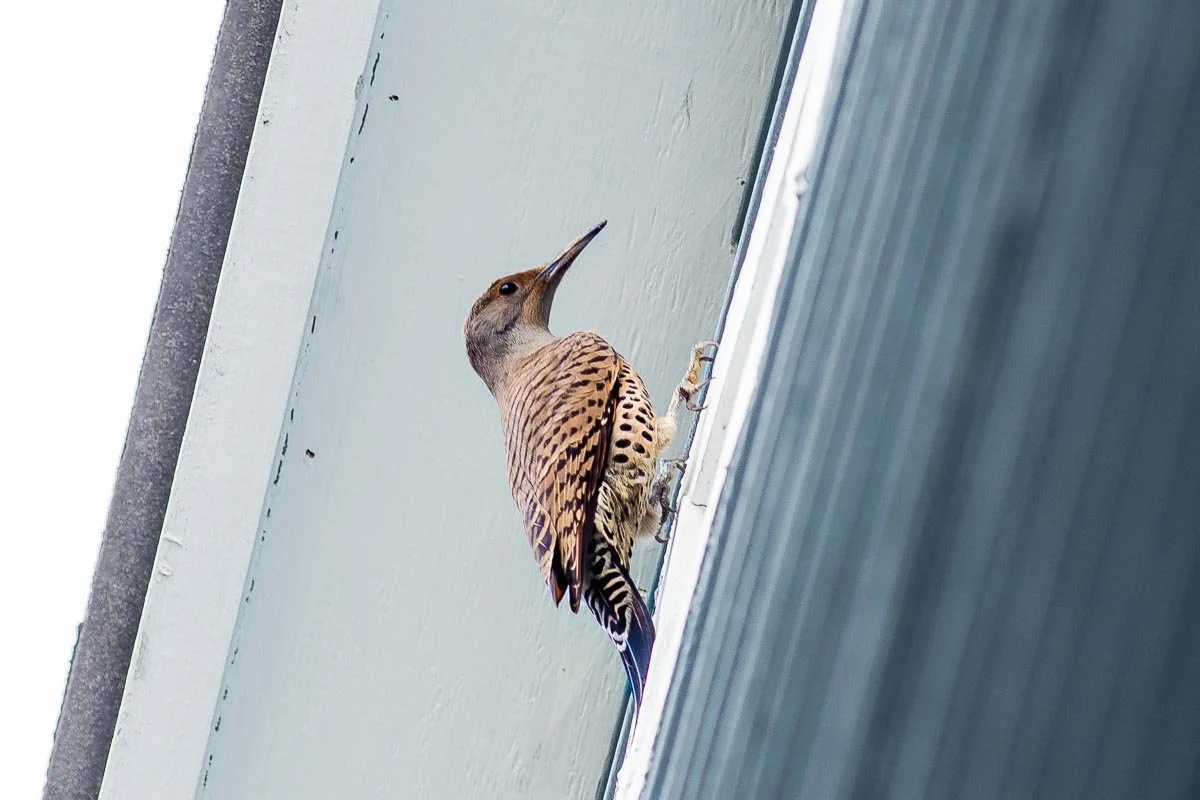Our Woodpecker Removal Services

Woodpecker removal is crucial in nuisance scenarios as these birds can cause significant structural damage to homes by pecking on wood siding, roofs, and even utility poles. Their incessant drumming not only leads to costly repairs but can also affect the overall aesthetic appeal and value of a property. Safely removing woodpeckers helps maintain the integrity of the home while preventing future infestations and ensuring a peaceful living environment for residents.

Woodpeckers can cause significant damage to homes by pecking through wooden siding, creating unsightly holes that can lead to water infiltration and structural issues. Their persistent drilling can also compromise the integrity of eaves, soffits, and even wooden beams, resulting in costly repairs. Additionally, the noise from their pecking can be disruptive to homeowners, leading to frustration and a diminished quality of life.
5 Step Bird Removal Process



Frequent asked questions
Woodpeckers peck to search for insects, mark territory, or create nesting cavities. Homes with wood siding often sound hollow, which attracts them for drumming. Sometimes they mistake man-made structures for dead trees. If the conditions are right, they’ll return repeatedly.
They create holes that vary in size, often damaging insulation and letting moisture inside. Over time, this can lead to mold, rot, and water leaks. Paint can chip or peel near the holes as well. Repeated pecking can weaken entire sections of siding.
No, while they prefer wood, they’ve been known to attack synthetic stucco (EIFS), cedar shake, plywood, and even vinyl. Any material that sounds hollow or holds insects can become a target. Wood is just the most common because it’s easier to puncture. Some will also drum on metal for noise.
Look for small to medium-sized holes in rows or clusters on siding, especially high up. You might also hear loud tapping or drumming during the day. Droppings, damaged trim, and visible insect activity can also be signs. Inspection of siding and soffits usually confirms the source.
Yes, in some cases the holes are large enough for small birds, bats, or squirrels. Once the woodpecker opens a cavity, it leaves the area vulnerable. This creates secondary pest problems inside the wall or attic. It’s important to seal those entry points quickly.
Yes, they often return to past nesting or feeding sites if not properly deterred. Once a home is targeted, it becomes part of their territory. The behavior usually continues each spring. Long-term deterrents are needed to break that pattern.
They’re drawn to insect activity, soft or rotting wood, and echoing surfaces that amplify sound. Homes near wooded areas or with natural siding are more likely to be hit. Any signs of carpenter bees or ants can also attract them. Drumming surfaces like gutters or chimney caps can be a trigger too.
Yes, synthetic stucco is a common target because it’s soft and can hold insects. They don’t usually puncture metal but will drum on it loudly. Even if they don’t break through, the noise is often disruptive. Stucco damage can be hard to spot until it’s widespread.
Spring is the peak time, especially between March and June. That’s when woodpeckers drum to attract mates or claim territory. Some may continue through summer or return in the fall. Activity slows down in winter but doesn’t always stop completely.
In most cases, woodpecker damage is considered preventable and not covered. Some policies may offer limited coverage if it’s part of a larger issue. It’s best to check the fine print or talk directly with your provider. Either way, fast repairs help avoid bigger problems.

100% Satisfaction Guaranteed